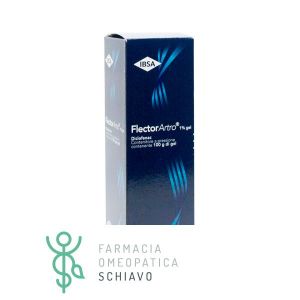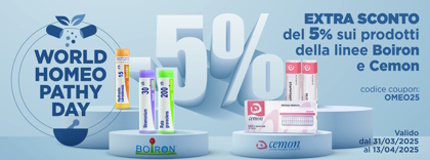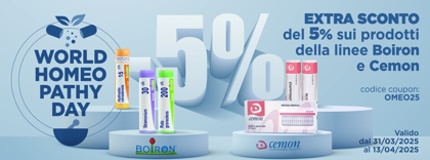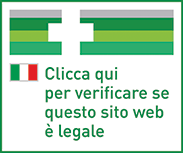Ship in Europe, Find out rates!
Flectorartro 1% Gel Dicoflenac Pressure Container 100 g

- box Delivery in Italy in 24/48 and free returns
- star3.000+ positive reviews
- dropboxOver 60,000 products in the catalog
Therapeutic indications
Local symptomatic relief of pain and inflammatory states caused by post-traumatic injuries, such as bruises, sprains and tendinitis.
Dosage
For cutaneous use only. For adults and adolescents over 15 years of age only.Depending on the size of the affected area, apply 2 - 4 g of gel 2 - 4 times a day for a maximum treatment period of two weeks. After application, wash your hands, except in cases where they are the treated area. If there is no improvement or if the condition worsens after 4 days of treatment, consult your doctor or pharmacist. Elderly The dosage indicated for adults may apply. See also section 4.4 Children and adolescents below 15 years There are insufficient data on efficacy and safety available for children and adolescents below 15 years of age (see also section 4.3). In people aged 15 years and over, the patient / parents of the patient should consult their doctor if treatment with this medicine is needed for longer than 7 days as analgesic therapy or if symptoms worsen. Patients with hepatic or renal insufficiency For the use of Flectorarthrosis 1% gel in patients with hepatic or renal insufficiency see section 4.4.
Overdose
The low systemic absorption of topical diclofenac makes the risk of overdose very unlikely. However, undesirable effects similar to those seen after an overdose of diclofenac tablets are to be expected in case of accidental ingestion of diclofenac topical (1 tube of 100 g contains the equivalent of 1000 mg diclofenac sodium). In the event of accidental ingestion resulting in significant systemic adverse effects, therapeutic measures normally adopted for the treatment of poisoning by non-steroidal anti-inflammatory drugs should be used. The hypothesis of gastric decontamination and use of activated charcoal will also be evaluated, especially within a short time after ingestion.
Contraindications
This medicine is contraindicated in the following cases: - Hypersensitivity to diclofenac, acetylsalicylic acid (aspirin) or other NSAIDs. - Hypersensitivity to any other component of the gel. - Patients in whom attacks of asthma, urticaria or acute rhinitis are precipitated by the action of acetylsalicylic acid or non-steroidal anti-inflammatory drugs (NSAIDs). - Damaged skin, regardless of the type of lesion: exudative dermatitis, eczema, infected lesion, burns or wounds. - From the third trimester of pregnancy (see section 4.6). - Use in children and adolescents under 15 years of age is contraindicated.
Side effects
Adverse reactions (Table 1) are ranked under frequency, the frequency highest first, with the following convention: very common: (> 1/10); common (≥1 / 100 to <1/10); uncommon (≥1 / 1,000 to <1/100); rare (≥1 / 10,000, <1 / 1,000); very rare (<1 / 10,000); not known: frequency cannot be estimated from the available data. Table 1
| Disorders of the immune system | |
| Very rare | Hypersensitivity (including urticaria), angioneurotic edema |
| Not known | Anaphylactic-type reaction |
| Infections and infestations | |
| Very rare | Pustular eruption |
| Respiratory, thoracic and mediastinal disorders | |
| Very rare | Asthma |
| Skin and subcutaneous tissue disorders | |
| Common | Rash, eczema, erythema, dermatitis (allergic and contact), itching |
| Rare | Bullous dermatitis |
| Very rare | Photosensitivity |
Pregnancy and breastfeeding
Pregnancy The systemic concentration of diclofenac epolamine is lower after topical administration than for oral formulations. With regard to the experience gained in the field of treatment with NSAIDs for systemic use, the following is recommended: Inhibition of prostaglandin synthesis may adversely affect pregnancy and / or embryo / fetal development. Results of epidemiological studies suggest an increased risk of miscarriage and cardiac malformation and gastroschisis after use of a prostaglandin synthesis inhibitor in early pregnancy. The absolute risk of cardiovascular malformations increased from less than 1% to approximately 1.5%. The risk was considered to increase with dose and duration of therapy. In animals, administration of prostaglandin synthesis inhibitors has been shown to cause an increase in pre- and post-implantation loss and embryo-fetal mortality. Furthermore, an increased incidence of various malformations, including cardiovascular, has been reported in animals given prostaglandin synthesis inhibitors during the organogenetic period. During the first and second trimester of pregnancy, diclofenac epolamine should not be administered unless strictly necessary. If diclofenac epolamine is used by a woman attempting to conceive, or during the first and second trimester of pregnancy, the dose should be kept as low as possible and the duration of treatment as short as possible. During the third trimester of pregnancy, all prostaglandin synthesis inhibitors can expose the fetus to: - cardiopulmonary toxicity (with premature closure of the arterial duct and pulmonary hypertension); - renal dysfunction, which can progress to renal failure with oligo – hydroamnios; the mother and the newborn, near the birth, to: - possible prolongation of the bleeding time, and antiplatelet effect which can occur even at very low doses; - inhibition of uterine contractions resulting in delayed or prolonged labor. Consequently, diclofenac is contraindicated from the third trimester of pregnancy. Breastfeeding Like other NSAIDs, diclofenac is passed into breast milk in small quantities. However, at therapeutic doses of Flectorarthrosis 1% gel, no effects on the suckling child are anticipated. Since controlled studies in lactating women have not been conducted, the product should only be used in lactating women under medical supervision. In this case, Flectorarthrosis 1% gel should not be applied to the breast or any large skin area or for an extended period of time (see section 4.4).
Special warnings
Undesirable effects can be minimized by administering the lowest effective dose for the shortest duration necessary to control symptoms, without exceeding the maximum period of two weeks (See sections 4.2 and 4.8). The possibility of systemic adverse events produced by the application of topical diclofenac cannot be excluded if the preparation is used on large skin areas and for a prolonged period (see product information for other systemic forms of diclofenac). Although the onset of systemic effects is very rare, caution should be exercised in the use of the gel in patients with renal, cardiac or hepatic impairment, a history of peptic ulcer or inflammatory bowel disease or bleeding diathesis. Non-steroidal anti-inflammatory drugs should be used with particular caution in elderly patients, who are more prone to adverse events. Diclofenac for topical use should only be applied to intact, non-injured skin, not to lesions or open wounds. It must not come into contact with the eyes or mucous membranes and must not be ingested. Stop the treatment if you develop a rash after applying the product. Diclofenac for topical use can be used with non-occlusive dressings, but should not be used with non-breathable occlusive dressings. Patients should be advised of the contraindication to direct sun exposure and artificial UV rays in order to reduce the risk of photosensitivity. The use of gloves is recommended for the physiotherapist. Diclofenac for topical use in gel contains propylene glycol which in some individuals may cause mild localized skin irritation. The presence of methyl benzoate causes irritation of the skin, eyes and mucous membranes.
Expiry and Retention
This medicinal product does not require any special storage conditions.
Active principles
100 g of gel contains 1 g of diclofenac sodium in the form of diclofenac epolamine. Excipients with known effects: propylene glycol, methyl benzoate. For the full list of excipients, see section 6.1.
Excipients
Soy lecithin, macrogolglycerol hydroxystearate, macrogol stearate, carbomer, sodium hydroxide, isopropyl alcohol, fragrance (Floral PH – Y containing benzyl acetate, phenylethyl alcohol, hydroxytronellal, petitgrain oil from Paraguay, cinnamic alcohol, propylene glycol, and methyl benzoate) purified water. Compressed air (for pressure vessel only)


